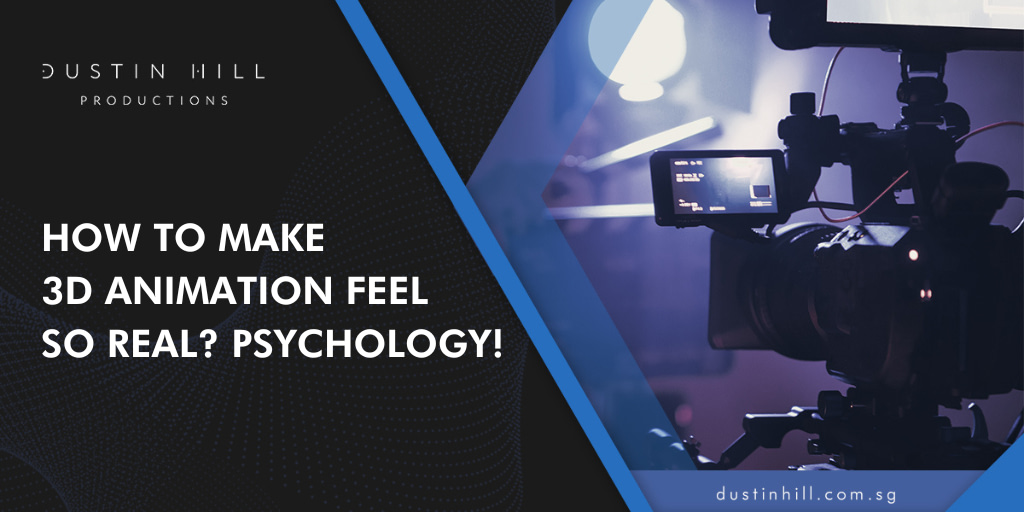I hope you know that moment when you’re watching a 3D animated movie, and it feels like the characters could jump right out of the screen.
Well, the secret sauce isn’t just in the advanced tech or stunning graphics. There’s a lot of psychology behind it!
Prepare to take an informative journey into the world of 3D animation and discover why it feels so real.
1. Perceptual Cues
It is the signals our brains use to understand the world, such as light, shadow, depth, and perspective. These cues help create a sense of reality in your animations.
- Light and Shadow: Study how light falls on objects and creates shadows. Use this knowledge to add depth and lifelike effects to your scenes. For instance, ensure that shadows fall consistently based on the light source in a sunny outdoor scene.
- Depth of Field: Use depth of field to make objects in the foreground appear sharp and those in the background blur, replicating how our eyes focus on different distances.
- Perspective: Ensure objects shrink as they move further from the audience to create a sense of space, making your scenes look more real.
Do’s: Proper Use of Light and Shadow
Light and shadow help create depth and life-like effects. Explore how light interacts with different surfaces.
Don’ts: Overlook Lighting Details
Poor lighting can make scenes look flat. Pay attention to light direction, intensity, and color.
2. Human Anatomy and Movement
To create realistic animations, you need to understand human anatomy and movement. To do this, you need to know how the human body is structured and how it moves.
- Study anatomy: Learn about bones, muscles, and joints to understand how the body moves. For instance, if you know how the elbow bends, you can animate a character’s accurate arm movement.
- Observe real motions: Observe people walking, running, and performing various actions. Use these details to design your animations. For example, pay attention to how a person’s body moves when they take a step.
Do’s: Study Anatomy
Learn about the human skeleton, muscles, and how they work together to produce movement.
Don’ts: Ignore Accuracy
Inaccurate anatomy can make characters look odd. Pay attention to details.
3. Muscle and Skin Simulation
It involves making the muscles and skin of your characters move in a realistic way. It’s important for creating life-like characters.
- Muscle Systems: Use software tools that simulate muscle movements under the skin. For example, when a character lifts an object, their arm muscles should flex.
- Skin Deformation: Animate the skin to stretch and compress over muscles. When a character smiles, the skin around their mouth should move in a realistic way.
Do’s: Use Muscle Systems
Incorporate muscle systems into your characters for realistic movement.
Don’ts: Over-simplify Muscle Movements
Muscle movements are complex. Avoid over-simplifying them.
4. Facial Expressions and Emotions
Facial expressions are key for showing emotions and making characters relatable. They help the audience connect with your characters on an emotional level.
- Study Facial Anatomy: Learn about the muscles that create expressions. For instance, know how the muscles around the eyes move when a character smiles.
- Watch Real Emotions: Observe people’s faces as they show different emotions. Use these details to improve your animations. For example, notice how eyebrows move when someone is surprised.
Do’s: Study Facial Anatomy
Understand the muscles involved in facial expressions.
Don’ts: Use Generic Expressions
Generic expressions can look unreal. Create specific expressions that match emotions.
5. Psychophysics
Study how we feel sensory details, such as how we see and hear things.
- Sensory Cues: Match sounds, textures, and visuals to real-world experiences. For example, when animating a rain scene, make sure the sound of rain drops matches the visual of rain hitting surfaces.
- Study Perception: Understand how people perceive light, sound, and motion. This can help you create more life-like animations. For instance, the way light reflects off different surfaces can affect the realism of your scene.
Do’s: Use Realistic Cues
Include sounds, textures, and visuals that match the real world.
Don’ts: Ignore Sensory Gaps
Differences between visual and sound cues can break focus. Ensure they match.
6. Cognitive Load
Cognitive load is the amount of mental work required to process information. Keeping this load manageable helps the audience enjoy your animations without feeling overwhelmed.
- Simplify Complex Scenes: Focus on key elements to make scenes easier to understand. For instance, in a busy city scene, enhance the main action and keep background details subtle.
- Guide Attention: Use lighting, color, and composition to direct audience focus. Bright colors and lighting can draw attention to important parts of the scene.
Do’s: Simplify Complex Scenes
Make complex scenes easier to understand by aiming at key elements.
Don’t’s: Put too much in Details
Too many details can confuse the audience. Keep it simple and clear.
7. Micro-Motions and Details
Micro-motions are small, natural actions that make characters and scenes feel more alive. Background details add depth to the world you create.
- Include Micro-Motions: Add small, natural motions like a character shifting weight or blinking. These tiny actions can make characters feel more real.
- Add Background Details: Include small details that add depth to the scene. For instance, leaves rustling or water rippling can make the scene feel more real.
Do’s: Include Micro-Motions
Add small, natural motions like a character shifting weight or blinking.
Don’ts: Forget Environmental Interactions
Characters should interact with their surroundings.
What’s Next for 3D Animation?
So, the next time you watch a 3D animation video, think about the amazing psychology behind it. It’s not just pixels on a screen but a complex mix of art, technology, and brain research that makes it feel real.
If you want to turn your ideas into 3D animations, working with a professional video production company can make all the difference. They can turn your concepts into life-like animations that capture and inspire your audience.
Start your animation project today and see your vision come to life.

